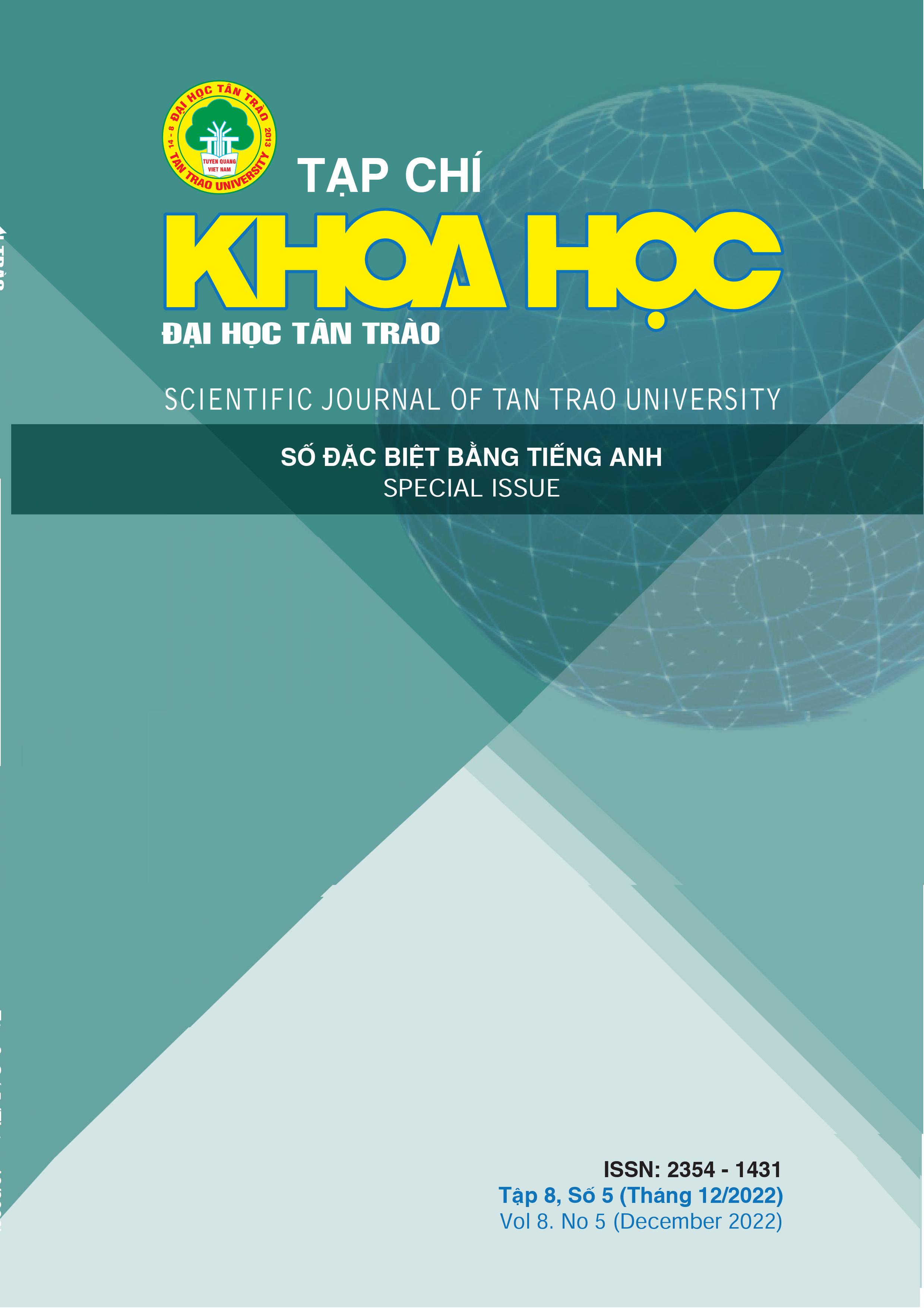FROM MIONG TO DIGONG: THE DYNAMICS OF PHILIPPINE PRESIDENTIAL ELECTIONS (1897-2016)
DOI:
https://doi.org/10.51453/2354-1431/2022/861Keywords:
Philippine elections, democracy, political culture, political parties, president.Abstract
Elections have always been a vanguard of procedural democracy in the Philippines. From the time of the first presidential election in the Tejeros Convention in 1897 until the 2016 Presidential derby, the voice of the people has been instrumental in catapulting the chief executive to the seat of power in Malacañang Palace. It is interesting to note that the dynamics of Philippine presidential elections has been written by only a few scholars. This study attempts to provide the mechanism of elections including its results in determining the occupant of the highest position of the land which is held by the Office of the President.
Since the first presidential election in 1897 with Emilio Aguinaldo as president, the outcome has always been marred with influence peddling and electioneering. The maturity of presidential election was further enhanced with the 1935 and 1941 Commonwealth election with Manuel L. Quezon at the helm of power. However, mudslinging and rumour-mongering became pronounced during this democratic exercise. After the death of Quezon, the Philippines witnessed its first presidential succession under Sergio Osmeña Sr. During the outbreak of World War II and the Japanese occupation in 1941, Jose P. Laurel was installed as president by the National Assembly controlled by the imperial government of Japan.
After World War II, the election of Manuel Roxas, Elpidio Quirino, Ramon Magsaysay, Carlos Garcia, Diosdado Macapagal, Ferdinand Marcos, Corazon Aquino, Fidel Ramos, Joseph Estrada, Benigno Simeon Aquino III and Rodrigo Duterte provided strength in the procedural aspect of democracy. It is in this context of the process of presidential electoral procedure that the following questions will be answered: what was the context of the presidential election of each chief executive?, what were the political parties involved and how they contend each other?, what were the significant election issues?, how was the presidential election conducted?, and what were the results?
Downloads
References
REFERENCES:
Books
/[1]. Agoncillo, T. A. (1996) History of the Filipino People (8th Edition). Quezon City: C & E Publishing, Inc.
/[2]. Banlaoi, R. C. et al. (1996) Political Parties in the Philippines: From 1900 to the Present. Makati City: Konrad Adenauer Foundation.
/[3]. Carlos, C. et al. (1996) Elections in the Philippines: From Pre-colonial Period to the Present. Makati City: Konrad Adenauer Foundation.
/[4]. Constantino, R. (1978) The Philippines: A Past Revisited Volume 1 (Pre-Spanish -1941). Manila: Foundation for Nationalist Studies.
/[5]. Cortes, R. M. (1999) Philippine Presidents. Quezon City: Philippine Historical Association.
/[6]. de Viana, A. (2019) Pahiwatig: A Guide for Understanding Readings in Philippine History. Mandaluyong City: Books Atbp. Publishing Company.
/[7]. Heywood, A. (2002) Politics. (Second Edition). New York: Palgrave, Macmillan.
/[8]. Lande, C. H. (1965) Leaders, Factions and Parties. Yale University: Southeast Asian Studies.
/[9]. Quezon III, M. L. (ed) (2005) Philippine Electoral Almanac. Manila: The Presidential Communication and Development and Strategic Planning Office.
/[10]. Yu-Jose, L. (2010) Philippine Politics: Democratic Ideals and Realities. Quezon City: Ateneo de Manila University Press.
/[11]. Zaide, S. M. (1994) The Philippines: A Unique Nation. Manila: All-Nations Publishing Co., Inc.
/[12]. Zakaria, F. (2003) The Future of Freedom: Illiberal Democracy at Home and Abroad. New York: W.W. Norton and Company.
Internet Sources
/[13]. News, A.-C. (2015, October 27). Party Picks Duterte As Substitute In Presidential Race. ABS-CBN News. https://news.abs-cbn.com/nation/10/27/15/party-picks-duterte-as-substitute-in-presidential-race">https://news.abs-cbn.com/nation/10/27/15/party-picks-duterte-as-substitute-in-presidential-race
/[14]. (2015, November 27). Duterte Files COC For President. GMA News Online . https://www.gmanetwork.com/news/news/nation/545982/duterte-files-coc-for-president/story/">https://www.gmanetwork.com/news/news/nation/545982/duterte-files-coc-for-president/story/
/[15]. http://edition.cnn.com/WORLD/election.watch/asiapcf/philippines2.html
/[16]. https://ph.rappler.com/elections/2016/results/philippines/position/1/president
Official Government Documents
/[17]. Commission on Elections. (1950) Report of the Commission on Elections to the President of the Philippines and the Congress on the Manner of Elections Held in 1949. Manila: Bureau of Printing.
/[18]. Commission on Elections. (1954) Report of the Commission on Elections to the President of the Philippines and the Congress on the Manner of Elections Held in 1953. Manila: Bureau of Printing.
/[19]. Commission on Elections. (1958) Report of the Commission on Elections to the President of the Philippines and the Congress on the Manner of Elections Held in 1957. Manila: Bureau of Printing.
/[20]. Commission on Elections. (1962) Report of the Commission on Elections to the President of the Philippines and the Congress on the Manner of Elections Held in 1961. Manila: Bureau of Printing.
/[21]. Commission on Elections. (1966) Report of the Commission on Elections to the President of the Philippines and the Congress on the Manner of Elections Held in 1965. Manila: Bureau of Printing.
/[22]. Commission on Elections. (1970) Report of the Commission on Elections to the President of the Philippines and the Congress on the Manner of Elections Held in 1969. Manila: Bureau of Printing.
Downloads
Published
How to Cite
Issue
Section
License

This work is licensed under a Creative Commons Attribution-ShareAlike 4.0 International License.
All articles published in SJTTU are licensed under a Creative Commons Attribution-ShareAlike 4.0 International (CC BY-SA) license. This means anyone is free to copy, transform, or redistribute articles for any lawful purpose in any medium, provided they give appropriate attribution to the original author(s) and SJTTU, link to the license, indicate if changes were made, and redistribute any derivative work under the same license.
Copyright on articles is retained by the respective author(s), without restrictions. A non-exclusive license is granted to SJTTU to publish the article and identify itself as its original publisher, along with the commercial right to include the article in a hardcopy issue for sale to libraries and individuals.
Although the conditions of the CC BY-SA license don't apply to authors (as the copyright holder of your article, you have no restrictions on your rights), by submitting to SJTTU, authors recognize the rights of readers, and must grant any third party the right to use their article to the extent provided by the license.


